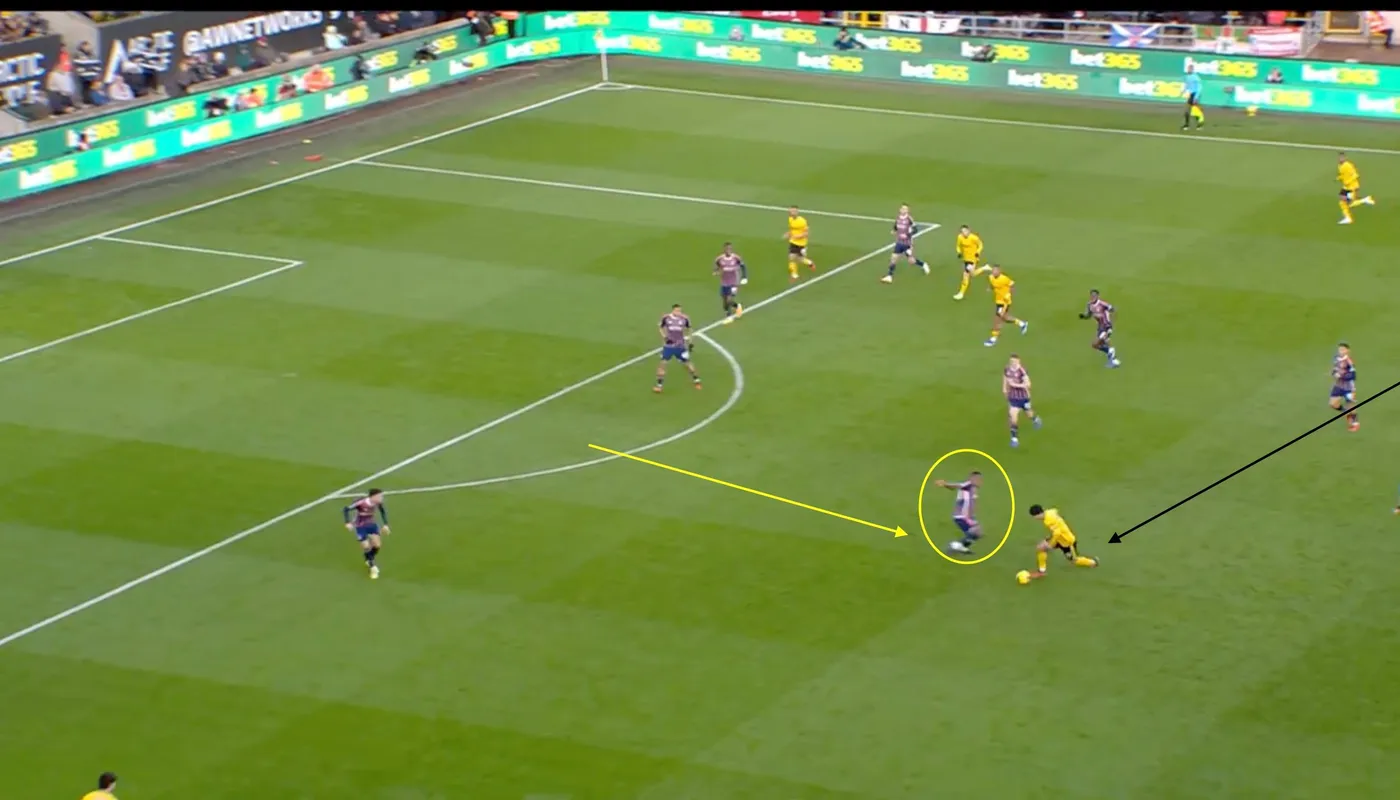Adrian Clarke looks at key tactical points and players who can be decisive in Matchweek 17.
Nott'm Forest's new defensive shape
Steve Cooper continually adapted his tactical approach en route to Premier League safety last season and Nottingham Forest’s head coach is following a similar path in 2023/24.
TV Info - Broadcasters
Needing a result at Wolverhampton Wanderers last weekend to end a run of four straight defeats, Cooper switched from a 4-2-3-1 formation to a 3-5-2, using the nimble Morgan Gibbs-White and Anthony Elanga up front.
While this set-up lacked the physical presence of a target man, with Taiwo Awoniyi injured, it was a formation that provided Forest with defensive compactness, good width and the ability to break at pace.
On the back of a much-improved performance in that 1-1 draw, it would be a surprise if Cooper moved away from a 3-5-2 for the visit of Tottenham Hotspur.
How does the system work?
Out of possession, Forest’s shape looks more like a 5-3-1-1, with Gibbs-White dropping on to the opposition’s deepest-lying central midfielder.
As you can see in the image below, Cooper’s defence has a 5v4 advantage, while in central midfield their diamond gives them a 4v2.

The intention from Cooper was that Wolves’ spare men were always either the central defenders or the furthest wide player on the opposite side.
This provided Forest with compact stability down the spine.
Important overloads
Whenever their opponents moved the ball out wide, Forest needed the numerical advantages to continue.
The shape therefore shifted towards the side of the ball, with the widest central midfielders Cheikhou Kouyate or Ryan Yates and the widest centre-backs, Moussa Niakhate or Willy Boly, coming across to get tight.
In this example below, Forest have both a 4v3 overload around the ball and a 4v3 in the central area. Wolves’ free players are either behind the ball or on the opposite side of the pitch.

Proactive defending
When play is switched against this system of play – and Spurs will look to do this routinely – you may also see one of the central defenders jump into midfield to engage with an attacker.
In the image below, Boly makes a 10-yard run to apply pressure, safe in the knowledge that there are team-mates behind to cover.

Higher up the pitch a lot is also asked of the wide central midfield players in this formation.
Kouyate and Yates got through a mountain of work at Molineux, sprinting to get tight to opposition midfielders, wing-backs and on occasions central defenders, too.
Just before half-time Kouyate created one of the best chances of the match for himself by sprinting 20 yards to press and rob Max Kilman, who miscontrolled a risky crossfield pass.
From the subsequent 1v1, Kouyate's shot was well saved by Jose Sa.

While Spurs may push Forest back into a low 5-4-1 block at times on Friday, the hosts prefer to get tight and press inside the middle third.
Cooper's wing-backs will get touch-tight, as will the central defenders on their inside and the midfielders in front.
Wolves struggled to settle on the ball and break Forest down in this contest, registering only 10 shots and recording an Expected Goals (xG) tally of 1.17.

Wing-backs are key
Spurs’ high defensive line may be exposed to the guile of Gibbs-White and the pace of Elanga from breakaways at the City Ground, but when Forest's build-up play is more patient it is Forest’s wing-backs who will be of vital importance.
Neco Williams and Harry Toffolo must advance as high up the pitch as possible to avoid their side being pinned back into their own half. And on the ball, they have a responsibility to provide key passes.
The pair combined twice to great effect at Wolves, when Williams crossed for his fellow wing-back to head home at the far post (see below). They almost repeated the trick in the second half when Toffolo headed over from close range.
Spurs will need to get a handle on these two players, who can deliver quality from the flanks.

Will Cooper persist with a back three?
Forest travelled to Arsenal, Manchester United, Chelsea and Manchester City across their opening six fixtures, so it was no surprise to see Cooper opt for a pragmatic 3-4-2-1 for those matches.
Having the insurance of an extra centre-back was important.
It is a shape that works well for them on the counter-attack and it earned Forest some terrific results during last season’s run-in.
Their 1-0 win at Chelsea in September was another highlight.
| Shape | 23/24 matches | Points |
|---|---|---|
| Back four | 9 | 7 |
| Back three | 7 | 7 |
However, having signed talented wingers Elanga and Callum Hudson-Odoi in the summer, Cooper is also eager to implement a 4-3-3 that suits those two players better.
This is the formation they used during their next phase of matches, all against sides outside of the traditional "Big Six", with the exception of a switch to 5-4-1 for Liverpool away.
Initially it provided a greater goal threat but, just as it was last season, the absence of a third central defender made them more vulnerable at the back.
Switching back to a three or five-man defence makes sense as Forest look to stabilise results, but between now and the end of the campaign you should expect plenty more tweaks from Cooper.
For the visit of Spurs, a 3-5-2 certainly feels the right shape to try and contain their exciting and dangerous opponents.
Also in this series
Part 1: How Fulham revived attack after Mitrovic exit
Part 3: Klopp's dilemma with Alexander-Arnold's new role







